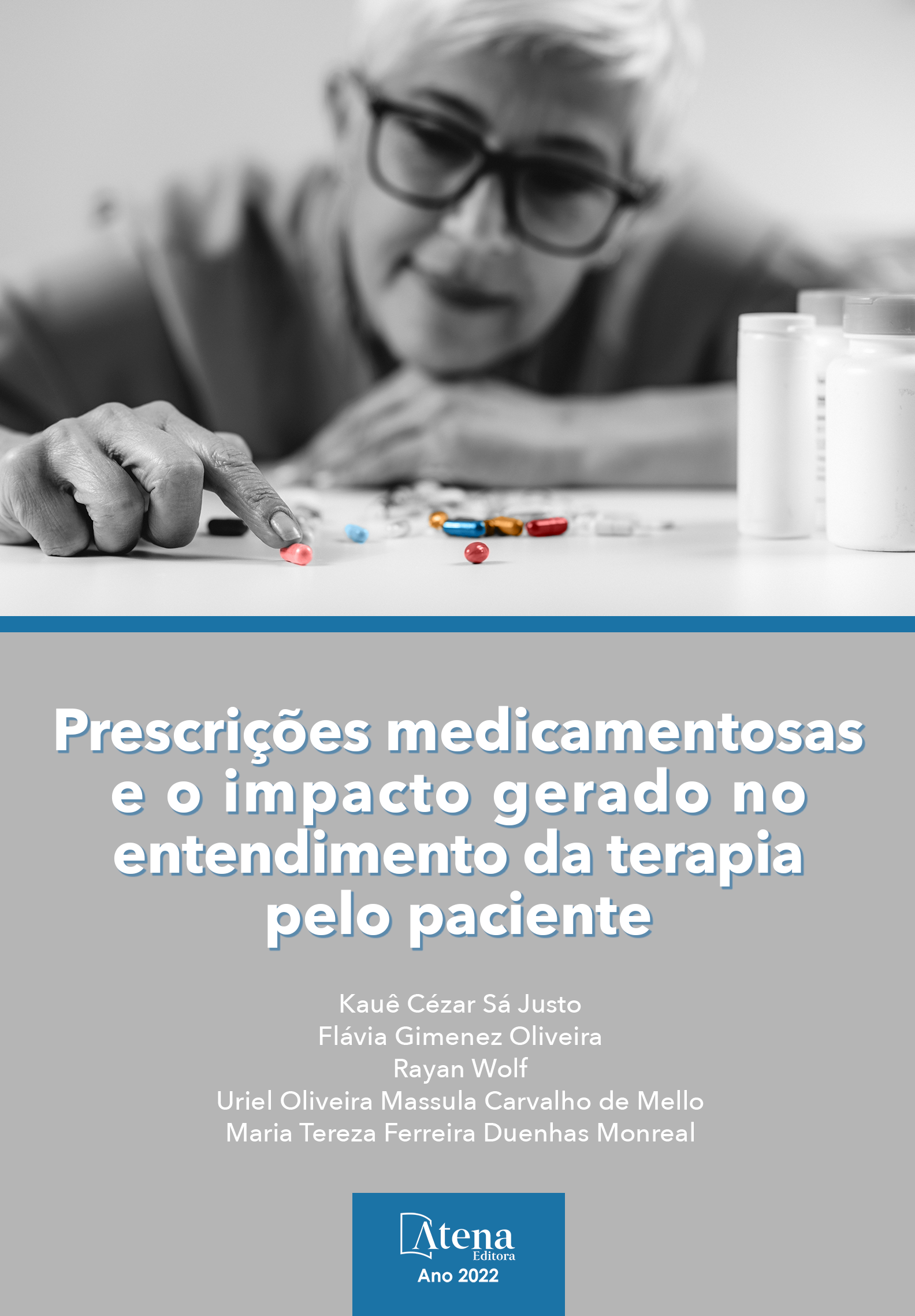
Prescrições medicamentosas e o impacto gerado no entendimento da terapia pelo paciente
Introdução: A prescrição de medicamentos é o instrumento chave para a indicação terapêutica, é emitida após anamnese, análise ou pedidos de exames clínicos e traça o caminho terapêutico a ser adotado para cada paciente. O entendimento da prescrição e do tratamento no todo é um fator essencial para a garantia da adesão e alcance dos resultados terapêuticos esperados. Objetivo: O presente estudo avaliou o entendimento sobre as prescrições medicamentosas pelos pacientes atendidos em Unidades Básicas de Saúde na cidade de Campo Grande, Mato Grosso do Sul. Metodologia: Foi realizado estudo de corte transversal descritivo no período de janeiro a julho de 2016 em 24 Unidades Básicas de Saúde do município. Os participantes foram selecionados aleatoriamente. A coleta foi realizada nos dias de atendimento de clínicos gerais nas Unidades e realizada por meio de instrumento de coleta de dados primários, envolvendo as variáveis sociodemográficas dos pacientes; dados de caracterização da prescrição; recebimento de orientações adicionais e indicadores propostos pela Organização Mundial da Saúde (prescrição e acesso aos medicamentos). A análise estatística inicial foi descritiva (estratificada proporcional), seguida de regressão logística (modelo binário). Resultados: Dos 384 pacientes que participaram do estudo, 65,9% eram do sexo feminino e 48,7% eram idosos. Das prescrições analisadas, 87,5% eram manuscritas, 52,4% foram consideradas legíveis, 53,1% foram entendidas de forma suficiente e o entendimento autoreferido pelos pacientes foi considerado suficiente em 69,3% dos casos. Cerca de 20% dos pacientes relataram o não recebimento de orientações em relação a prescrição e a interação entre o médico prescritor e o profissional farmacêutico nesse quesito foi baixa. As características sociodemográficas dos pacientes não apresentaram significância estatística em relação ao entendimento da prescrição. A relação entre legibilidade e a quantidade de medicamentos por prescrição apresentaram diferença estatística significativa (p≤0,01). A probabilidade de entendimento da prescrição quando esta é legível (considerando somente este fator) foi de 54,44%. Observou-se que a cada medicamento adicionado à prescrição, a probabilidade de entendimento foi reduzida em 4,2%. Foram satisfatórios os indicadores: porcentagem de consultas em que se prescreveu um antibiótico e a porcentagem de consultas em que se prescreveu um medicamento injetável. Em contrapartida, os indicadores: número médio de medicamentos por prescrição, porcentagem de medicamentos prescritos pelo nome genérico e a porcentagem de medicamentos prescritos inseridos na RENAME se mostraram insuficientes. Conclusão: O entendimento das prescrições medicamentosas e da terapia prescrita independeu do perfil do paciente. Logo, esse entendimento decorre exclusivamente da qualidade da prescrição, do seguimento das determinações para a emissão dessas prescrições, do serviço prestado pelos profissionais de saúde atuantes nas UBS e da interação entre estes profissionais.
Prescrições medicamentosas e o impacto gerado no entendimento da terapia pelo paciente
-
DOI: 10.22533/at.ed.513220205
-
Palavras-chave: Compreensão. Prescrições de medicamentos. Uso de medicamentos.
-
Keywords: Comprehension. Drug prescriptions. Drug utilization.
-
Abstract:
Introduction: The drug prescription is the key instrument for therapeutic indication, it is issued after anamnesis, analysis, or requests for clinical tests and outlines the therapeutic path to be adopted for each patient. The comprehension of the prescription and the treatment as a whole is an essential factor to guarantee adherence and reach the expected therapeutic results. Objective: This study evaluated the comprehension of drug prescriptions by patients seen at Primary Health Care Units in the city of Campo Grande, Mato Grosso do Sul. Methods: A descriptive cross-sectional study was conducted from January to July 2016 in 24 Basic Health Units in the city. The participants were randomly selected. The collection was performed in the days of attendance of general practitioners in the Units and carried out through primary data collection instrument, involving the sociodemographic variables of patients; prescription characterization data; receipt of additional guidance and indicators proposed by the World Health Organization (prescription and access to medicines). Initial statistical analysis was descriptive (proportional stratified), followed by logistic regression (binary model). Results: Of the 384 patients who participated in the study, 65.9% were female and 48.7% were elderly. Of the prescriptions analyzed, 87.5% were handwritten, 52.4% were considered legible, 53.1% were understood sufficiently, and the patients' self-reported understanding was considered sufficient in 69.3% of cases. About 20% of patients reported not receiving orientation regarding the prescription and the interaction between the prescribing physician and the pharmacist was low. The sociodemographic characteristics of patients showed no statistical significance in relation to the understanding of the prescription. The relationship between readability and the number of drugs per prescription presented a statistically significant difference (p≤0.01). The probability of understanding the prescription when it is legible (considering only this factor) was 54.44%. It was observed that for each medicine added to the prescription, the probability of understanding was reduced by 4.2%. The indicators: percentage of consultations in which an antibiotic was prescribed and the percentage of consultations in which an injectable drug was prescribed were satisfactory. On the other hand, the indicators: average number of drugs per prescription, percentage of drugs prescribed by the generic name, and percentage of prescribed drugs included in the RENAME were insufficient. Conclusion: The comprehension of drug prescriptions and the prescribed therapy was independent of the patient's profile. Therefore, this understanding arises exclusively from the quality of the prescription, the follow-up of the determinations for the issuance of these prescriptions, the service provided by health professionals working in Primary Health Care Units, and the interaction among these professionals.
-
Número de páginas: 51
- Flávia Gimenez Oliveira
- Rayan Wolf
- Uriel Oliveira Massula Carvalho de Mello
- Maria Tereza Ferreira Duenhas Monreal
- Kauê Cézar Sá Justo


